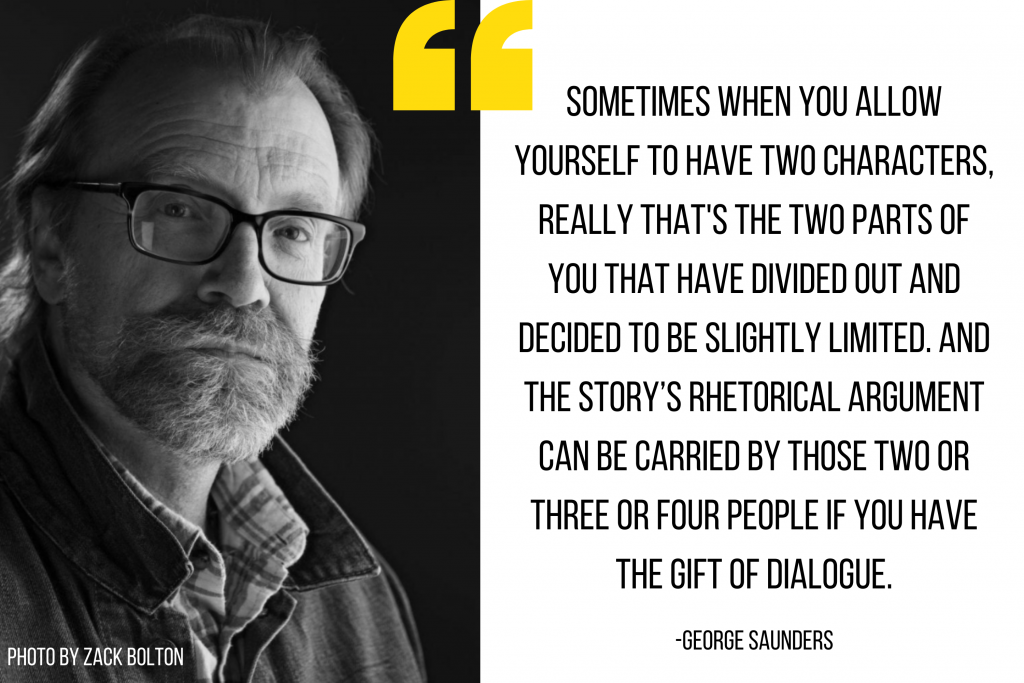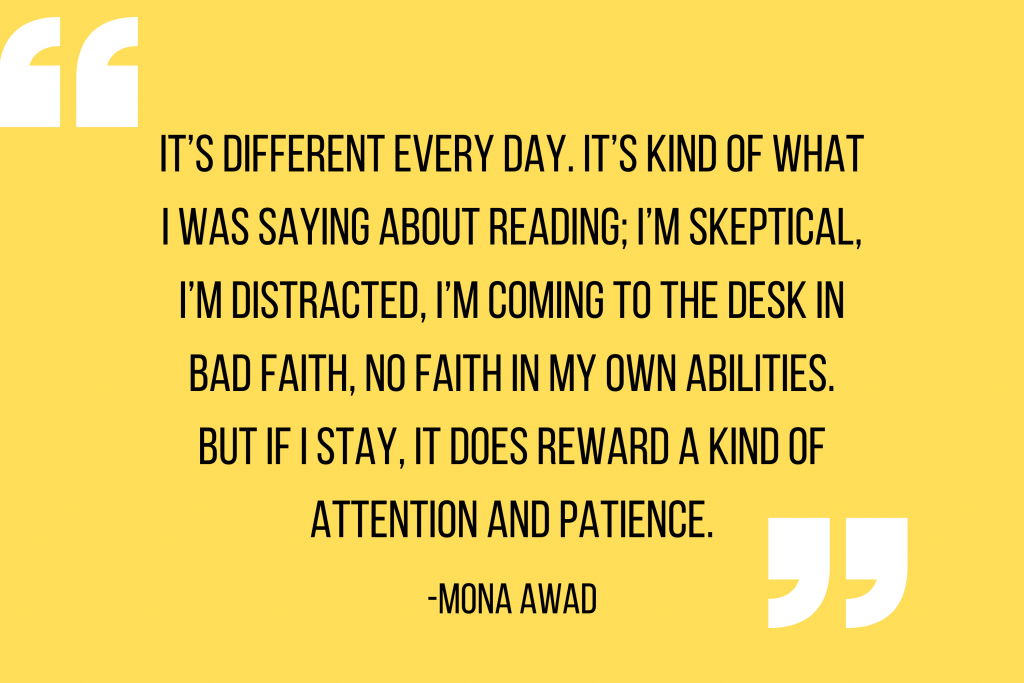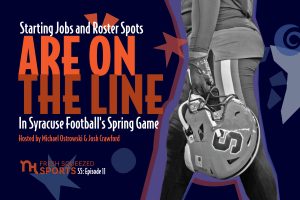Lauded authors George Saunders and Mona Awad discuss reading and writing
George Saunders and Mona Awad discuss reading and writing

Few universities could boast having an award-winning, high-caliber author as a faculty member, but Syracuse University is fortunate enough to have two.
Professors in SU’s Creative Writing MFA program, authors George Saunders and Mona Awad met over Zoom Wednesday night to discuss writing, reading and teaching literature. Saunders, renowned for his short stories, recently published his non-fiction debut “A Swim in a Pond in the Rain,” in which he analyzes seven Russian short stories that he has taught for decades in the MFA program. Awad won the Amazon Canada First Novel Award for her 2016 novel, “13 Ways of Looking at a Fat Girl,” and her new novel, “All’s Well,” is set to release in August 2021.
The authors spoke at length about the relationship between reader and writer. Saunders said that writing with the perspective of his reader in mind, as well as being honest with himself, helps him navigate obstacles in a story.
“I’ve gotten a little cocky about it, but I think if I ever get a story that isn’t working, all I have to do is have that sincere moment of asking it very quickly, ‘What’s wrong with you?’ and then accepting its first answer and accommodating that because that’s actually what the reader is doing, too,” Saunders said.
Saunders compared this to escape artist Harry Houdini’s famous antics. When Houdini would chain himself, get in a straitjacket and ask to be tossed into a lake, his audience was well aware of the problem. For the audience, the fun came from wondering how in the world he would solve the problem — and then watching him do it.
Awad said reader pleasure is an important consideration when writing, but also explained that most of her writing originates from ideas that give her pleasure. Even as a child, before she ever aspired to be a writer, Awad would write for her own amusement.
“I just loved entertaining myself with writing these dialogues,” Awad said. “For me, it was really about dialogue, there’s something about the energy that created.”
Dialogue remains a foundation of Awad’s process, a jumping-off point from which she can generate plot and create tension. Saunders agreed that conversation between characters is often the crux of a story.
“Sometimes when you allow yourself to have two characters, really that’s the two parts of you that have divided out and decided to be slightly limited,” Saunders said. “And the story’s rhetorical argument can be carried by those two or three or four people if you have the gift of dialogue.”

To create organic characters with distinct voices, the authors recommended that young writers embrace their own voice rather than trying to write like someone else.
“I had originally an idea that a writer had one voice, and it was very earnest — well, Ernest Hemingway actually — but very classical, very reserved and simple objective statements,” Saunders said. “Even now, when I try to be a serious 62-year-old classicist, I just get boring, the language has no spark, but when I allow myself to create a voice — and they’re usually pretty exaggerated and comic — then I can get some action going.”
That being said, the authors made it clear that diligent writing is no walk in the park. Awad explained that the first two or three hours of writing are often brutal for her, but with perseverance, her creativity eventually begins to flow.
“It’s different every day,” Awad said. “It’s kind of what I was saying about reading; I’m skeptical, I’m distracted, I’m coming to the desk in bad faith, no faith in my own abilities. But if I stay, it does reward a kind of attention and patience.”
Saunders echoed the sentiment, explaining that as a young writer, he adopted a mantra: you don’t have to decide what kind of writer you are, you just have to make every good decision every day. The end result will speak for itself.
“What you’re really trying to do is find an approach that unobstructs you psychologically, so you don’t end up becoming a neurotic artist who can’t finish anything,” Saunders said. “Of course, the trick is not the same for every person.”





